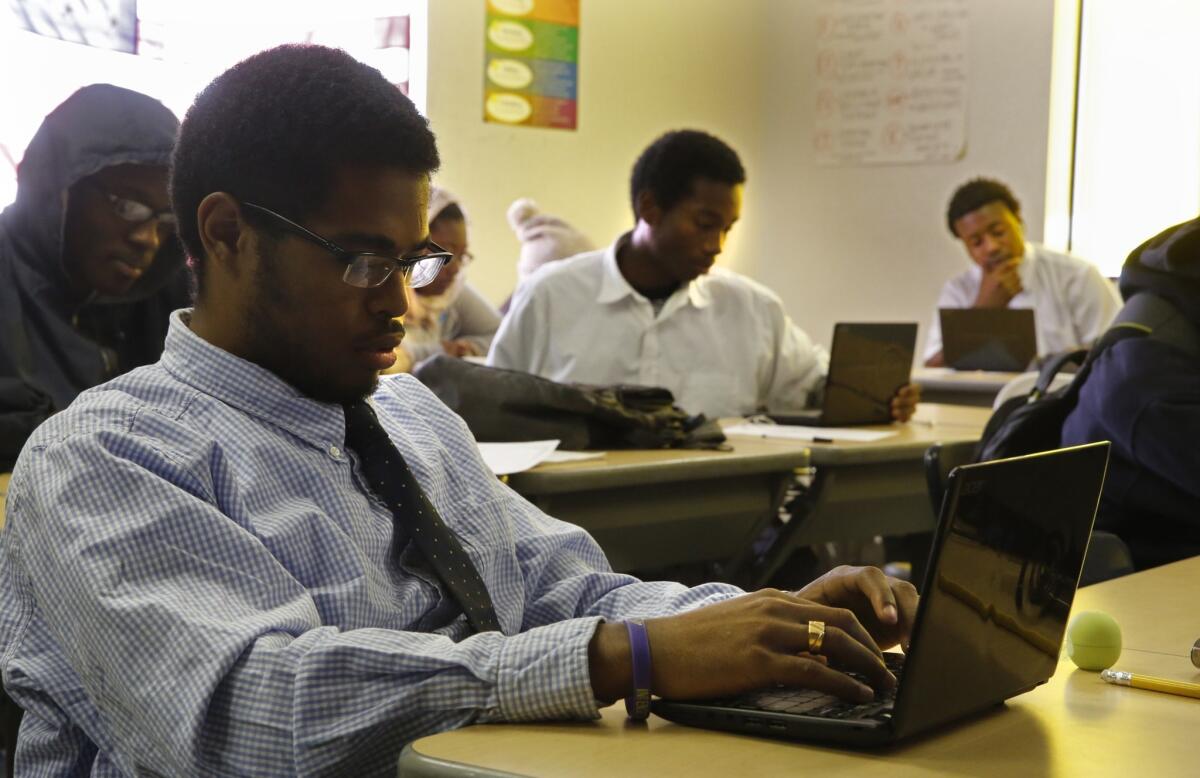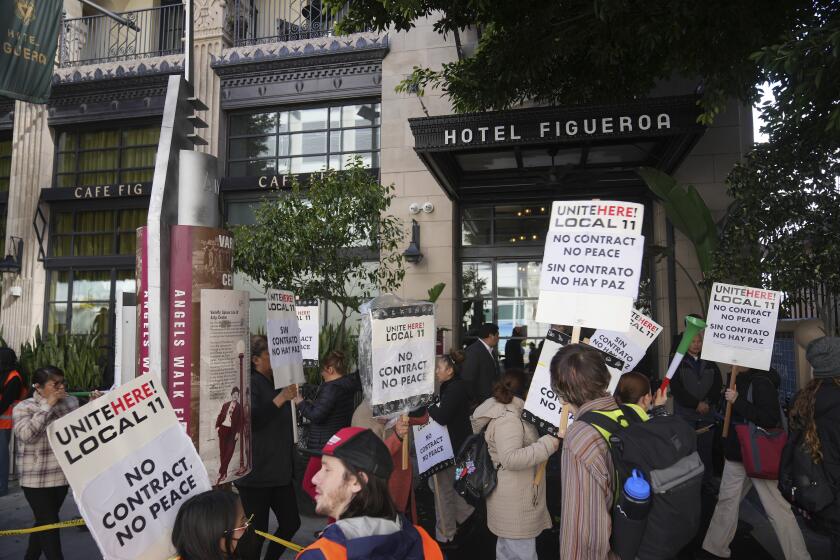FCC chief wants more money for high-speed Internet access at schools

The head of the Federal Communications Commission is seeking a major increase in funding to help boost Internet-access speeds at schools and libraries and expand their Wi-Fi networks.
Noting that 63% of schools lack high-speed broadband connections, FCC Chairman Tom Wheeler said Monday that he wants to raise the annual amount the government spends to wire educational faculties through its E-Rate program to $3.9 billion a year from $2.4 billion.
“The same digital revolution that gave us Netflix and YouTube has also opened new worlds of educational opportunities for teachers, students and libraries,” Wheeler told reporters on a conference call. “But, unfortunately, while the connected home is commonplace, the connected classroom and library is not.”
The increase would be paid for by hiking the monthly Universal Service Fund fee consumers pay on their phone bills by about 16%.
The fee now is 99 cents a month for each landline and mobile connection, and the average household has about three connections.
Wheeler said the additional cost — 16 cents per phone line a month or $1.92 a year — is minimal to help provide students, particularly those in rural and low-income schools, access to 21st century technology such as streaming high-definition video.
“Over the course of a year, that represents less than $2 and is the equivalent of one cup of coffee or one medium soda at McDonald’s per year,” Wheeler said.
He plans to circulate the proposal to the other four FCC commissioners this week and hold a vote Dec. 11 on increasing the spending cap.
Wheeler noted that the E-Rate program lacked an annual inflation adjustment from its start in 1997 until 2010.
Ajit Pai, one of two Republican commissioners, criticized the plan and said additional money for connecting classrooms and libraries should come from fixing the E-Rate program, not from “a massive, post-election tax increase.”
“Instead of imposing a greater burden on families struggling to make ends meet in this lackluster economy, the commission should pursue fiscally responsible reforms,” Pai said.
Pai and Michael O’Rielly, the FCC’s other Republican, had opposed an E-Rate overhaul the agency passed in July on a partisan 3-2 vote.
That initiative sought to modernize the program to focus expanding funding for Wi-Fi networks in schools and libraries so students would have Internet access at their desks.
Pai and O’Rielly wanted a broader overhaul that streamlined paperwork and focused the E-Rate program more on expanding Internet access at rural schools.
Wheeler said Monday that his proposal was aimed at helping rural schools and libraries.
He said 73% of rural school districts do not have any schools that meet FCC guidelines for high-speed Internet access, defined as 100 megabits of data per second for every 1,000 students.
About 41% of rural schools don’t even have the ability to connect to high-speed fiber optic networks because they are not available in their area, Wheeler said. That compares with 31% of urban and suburban schools.
The E-Rate program, which was created as part of the 1996 overhaul of telecommunications laws, has served its initial purpose of connecting just about every school and library to the Internet, he said.
Now the program must be updated, Wheeler said.
“Basic connectivity is now inadequate connectivity” he said. “The digital age demands we bring America’s schools and libraries into the 21st century so all students have the tools they need to compete in the global economy.”
Sen. Edward Markey (D-Mass.), who was one of the lawmakers behind the E-Rate program, said it was essential to American competitiveness to increase the program’s funding.
“It will help to transform the relationship between digital technology and every child in the country, regardless of race or geography or income,” he said, “and that is really what the original goal of the E-Rate program was.”
For breaking economic news, follow @JimPuzzanghera on Twitter
More to Read
Inside the business of entertainment
The Wide Shot brings you news, analysis and insights on everything from streaming wars to production — and what it all means for the future.
You may occasionally receive promotional content from the Los Angeles Times.











